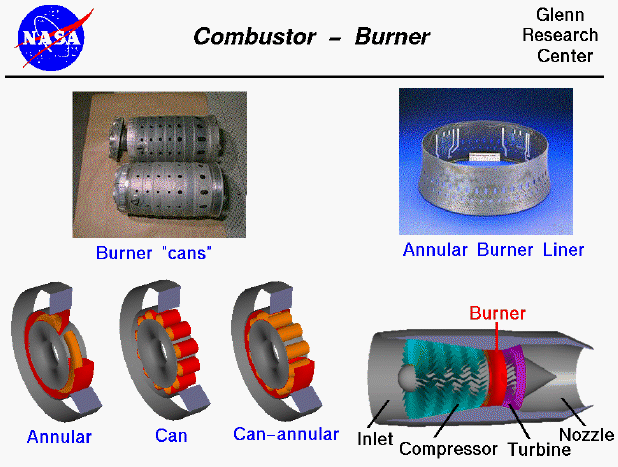

Most modern passenger and military aircraft are powered by gas turbine engines, which are also called jet engines. There are several different types of gas turbine engines, and all turbine engines have some parts in common. All turbine engines have a combustor, or burner, in which the fuel is combined with high pressure air and burned. The resulting high temperature exhaust gas is used to turn the power turbine and produce thrust when passed through a nozzle.
The burner (in red) sits between the compressor and the power turbine. The burner is arranged like an annulus, or a doughnut, as shown by the three burner configurations at the lower left. The central shaft that connects the turbine and compressor passes through the center hole. Burners are made from materials that can withstand the high temperatures of combustion. There is usually an outer casing (shown in red) and an inner liner (shown in orange). The liner is often perforated to enhance mixing of the fuel and air, as shown in the photo at the upper right.
There are three main types of combustors, and all three designs are found in modern gas turbines:
The details of mixing and burning the fuel are quite complex and require extensive testing for a new burner. For our purposes, we can consider the burner as simply the place where combustion occurs and where the working fluid (air) temperature is raised with a slight decrease in pressure, as explained on a separate slide.
Go to...
byTom
Benson
Please send suggestions/corrections to: benson@grc.nasa.gov